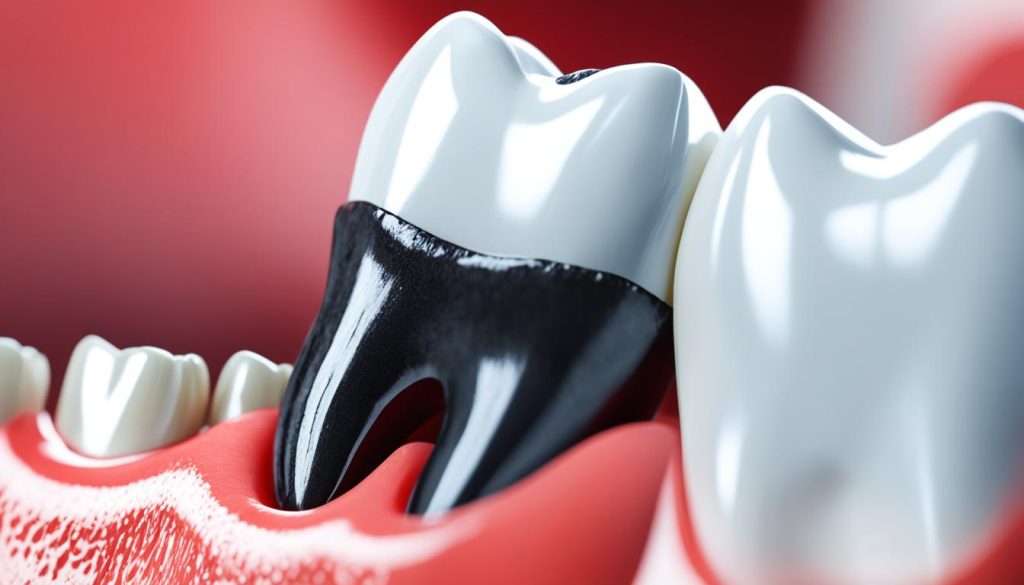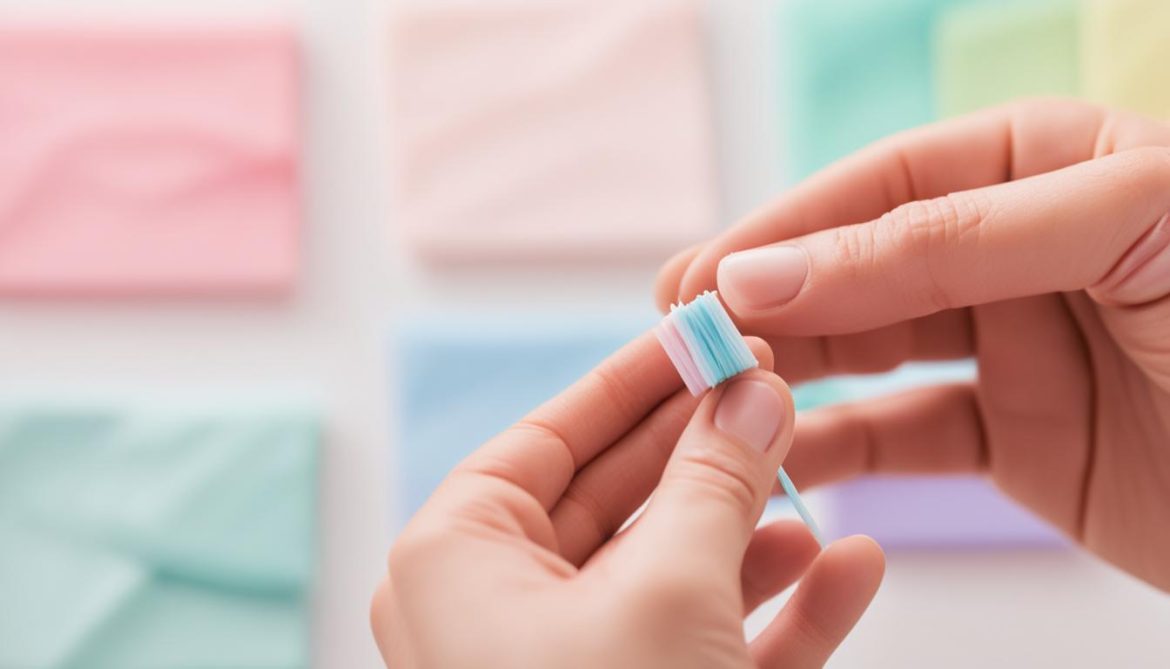If you’ve ever experienced tooth pain after flossing, you’re not alone. There are several reasons why your teeth may hurt after flossing, and it’s important to understand them to address the issue properly. This article will explore common causes of tooth pain after flossing and provide insights for better dental health.
New at Flossing? Take It Slow
If you’re new to flossing, it’s important to understand that it’s a technique that requires a gentle touch. Your teeth may be hurting after flossing because you’re flossing too hard, which can cause your gums to ache and bleed.
Take your time and approach flossing with a gentle technique. This will help prevent excessive pressure on your gums and reduce the risk of discomfort. It’s always a good idea to ask your dentist for proper flossing techniques to ensure you’re doing it correctly. They can provide guidance on the right amount of pressure to apply and the correct motion to use.
Remember, flossing is an essential part of maintaining good oral hygiene. By practicing flossing slowly and correctly, you can effectively remove plaque and debris from between your teeth and gums, promoting a healthier mouth.
Proper Flossing Technique for Beginners:
- Start with a piece of dental floss around 18 inches long.
- Hold the floss tightly between your thumbs and index fingers.
- Gently guide the floss between your teeth, moving it up and down in a C-shaped motion.
- Be careful not to force the floss or snap it into your gums.
- As you move to a new tooth, use a clean section of floss.
- Avoid rushing and take your time to clean each tooth thoroughly.
- Finish by rinsing your mouth with water or an alcohol-free mouthwash.
By following these steps and practicing patience, you can master the art of flossing and ensure a comfortable experience every time.
Sensitive Teeth and Tooth Sensitivity
If you experience tooth pain after flossing, it may be due to sensitive teeth. Some individuals are more prone to tooth sensitivity, which can be caused by genetics or aggressive brushing and flossing techniques. This sensitivity can lead to discomfort while flossing or when consuming hot or cold foods and beverages.
Using toothpaste and mouthwash specially formulated for sensitive teeth can help alleviate the pain associated with tooth sensitivity.
| Dental Products for Sensitive Teeth | Key Benefits |
|---|---|
| Toothpaste | Reduces sensitivity by building a protective barrier on the teeth |
| Mouthwash | Helps soothe and strengthen sensitive teeth |
| Desensitizing Gel | Provides targeted relief for sensitive areas |
By incorporating these specialized dental products into your oral care routine, you can minimize tooth sensitivity and enjoy flossing without discomfort. It is also advisable to avoid using hard-bristled toothbrushes and harsh toothpaste that can exacerbate tooth sensitivity.
If tooth sensitivity persists or worsens, it is recommended to consult with a dentist who can evaluate your condition and provide additional treatment options tailored to your needs. Taking proactive steps to address tooth sensitivity will contribute to improved dental health and a more enjoyable flossing experience.
Tooth Decay and Painful Flossing
If you experience pain while flossing, tooth decay could be the culprit. Decay often occurs in the tight spaces between your teeth where flossing is crucial. When harmful bacteria build up, it can lead to cavities and infections, causing intense discomfort during flossing in those areas.
To address the issue, it’s essential to seek professional dental care. A dentist can provide deep cleaning and necessary treatments to address the decay and prevent further discomfort. By taking proactive steps, you can alleviate painful flossing and promote better oral health.

| Causes of Tooth Decay | How it Leads to Painful Flossing |
|---|---|
| Poor oral hygiene | Allows bacteria to thrive and cause decay |
| Consuming sugary and acidic foods | Increases the risk of tooth decay |
| Inadequate flossing and brushing | Leads to plaque buildup and decay |
| Lack of regular dental check-ups | Prevents early detection and timely treatment of decay |
Remember, prevention is key when it comes to avoiding tooth decay and painful flossing. By practicing proper oral hygiene, maintaining a healthy diet, and visiting your dentist regularly, you can keep your teeth strong and enjoy pain-free flossing.
Gum Disease and Flossing Pain
Gum disease, also known as gingivitis, can cause pain during flossing. Poor oral hygiene can lead to gum disease, which is characterized by symptoms such as bad breath, swollen gums, and bleeding gums. Flossing is essential for removing plaque and tartar, but it can be painful when you have gum disease.
When you have gum disease, the gums become inflamed and sensitive. The act of flossing can irritate the already sensitive gums, causing pain and discomfort. It is important to address gum disease promptly to prevent further damage to the gums and teeth.
To effectively manage gum disease and alleviate flossing pain, it is crucial to seek treatment from a dentist. A dental professional will be able to evaluate the state of your gum health and provide appropriate treatments and recommendations.
They may recommend a thorough cleaning to remove plaque and tartar buildup, as well as provide instructions on proper brushing and flossing techniques to prevent further gum irritation. In some cases, they may prescribe antimicrobial mouthwash or antibiotics to help eliminate the bacteria causing the gum disease.
Additionally, maintaining a consistent oral hygiene routine that includes brushing twice a day, flossing daily, and using an antibacterial mouthwash can help prevent and manage gum disease.
Tips to Prevent Gum Disease and Flossing Pain:
- Brush your teeth twice a day using a soft-bristled toothbrush and fluoride toothpaste.
- Floss daily using a gentle back-and-forth motion to remove plaque between the teeth.
- Use an antimicrobial mouthwash to reduce bacteria in the mouth.
- Visit your dentist regularly for check-ups and professional cleanings.
- Avoid tobacco use, as it increases the risk of gum disease.
| Gum Disease Symptoms | Gingivitis Treatment | Preventive Measures |
|---|---|---|
| Bad breath | Professional dental cleaning | Brushing and flossing regularly |
| Swollen and tender gums | Antibiotics or antimicrobial mouthwash | Using an antibacterial mouthwash |
| Bleeding gums | Improving oral hygiene habits | Visiting the dentist regularly |
Dental Restorations and Flossing Discomfort
If you have dental restorations such as crowns or fillings, you may experience pain after flossing. This discomfort can be caused by loose or cracked restorations. When you floss, the dental floss can inadvertently dislodge or irritate these restorations, exposing nerves in the teeth and leading to intense pain.
It’s important to visit a dentist for a proper assessment if you’re experiencing flossing discomfort. The dentist will examine your dental restorations to determine if any replacements or repairs are needed to eliminate the pain. Ignoring loose dental restorations can worsen the problem and potentially lead to more extensive dental issues.
Conclusion
In conclusion, tooth pain after flossing can be caused by various factors that affect dental health. Whether it’s due to new flossing habits, sensitive teeth, tooth decay, gum disease, dental restorations, or improper flossing techniques, it’s crucial to consult with a dentist to identify the underlying cause and seek appropriate treatment.
To alleviate tooth pain after flossing and maintain optimal dental health, it’s important to follow proper oral hygiene practices. This includes brushing your teeth twice a day, flossing daily using the correct technique, and using sensitivity products, such as toothpaste and mouthwash formulated for sensitive teeth, if needed.
Additionally, seeking professional dental care is essential. Regular dental check-ups and cleanings will help prevent and detect any dental issues early on, reducing the risk of tooth pain after flossing. A dentist can provide personalized advice and recommendations to improve your dental health and ensure pain-free flossing.
Remember, taking care of your dental health is essential for overall well-being. By incorporating these flossing tips, practicing good oral hygiene, and seeking professional dental care, you can find tooth pain relief and maintain a healthy and beautiful smile.
FAQ
Why does my tooth hurt after flossing?
There are several reasons why your tooth may hurt after flossing. It could be due to improper flossing technique, sensitive teeth, tooth decay, gum disease, or dental restorations. Consult with a dentist to determine the underlying cause and receive appropriate treatment.
How can I avoid tooth pain after flossing if I’m new at it?
If you’re new to flossing, it’s important to take it slow and learn proper flossing technique. Ask your dentist for guidance and practice flossing gently to avoid any discomfort or pain.
What can I do if I have sensitive teeth that cause pain after flossing?
If you have sensitive teeth, consider using toothpaste and mouthwash specially formulated for sensitive teeth. These products can help alleviate the pain and discomfort experienced during and after flossing.
Can tooth decay contribute to painful flossing?
Yes, tooth decay can lead to painful flossing. The decay often occurs in the spaces between the teeth where flossing is necessary. Build-up of harmful bacteria can result in cavities and infections, causing intense pain when flossing in those areas. Visiting a dentist for deep cleaning and treatment is important to address the decay and prevent further discomfort.
Can gum disease cause pain during flossing?
Yes, gum disease, also known as gingivitis, can cause pain during flossing. Poor oral hygiene can lead to gum disease, characterized by bad breath, swollen gums, and bleeding gums. Flossing is essential for removing plaque and tartar, but it can be painful when you have gum disease. Seek treatment from a dentist to properly address gum disease and alleviate flossing pain.
Why do my dental restorations cause discomfort after flossing?
Loose or cracked dental restorations can cause pain after flossing. Flossing can expose nerves in the teeth, leading to intense pain. It’s important to visit a dentist for proper assessment and possible replacement of dental restorations to eliminate flossing discomfort.
How can I relieve tooth pain after flossing?
To alleviate tooth pain after flossing, follow proper oral hygiene practices, use sensitivity products, and seek professional dental care. Consult with a dentist for personalized advice and treatment options to maintain optimal dental health.







